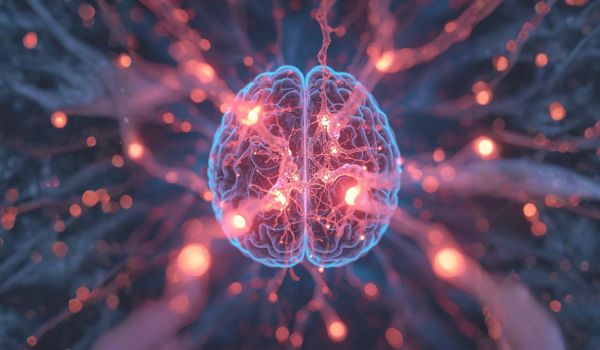UNDERSTANDING MINDFULNESS AND ITS ROLE IN MENTAL HEALTH
What is Mindfulness? Mindfulness is a concept that has gained significant popularity in recent years, often associated with practices like relaxation...
5 min read
BRENT NICOLINI, MS, LPC, LAC : Oct 13, 2025 1:53:58 PM

Brainspotting (BSP) is a powerful therapeutic approach that uses specific eye positions to facilitate the processing of trauma and other forms of psychological distress. Developed by Dr. David Grand in 2003, this technique operates on the premise that where you look can influence how you feel and is a key to processing emotional or physical issues.
The process begins with the therapist helping the client find a "brainspot"—a precise eye position that correlates with where trauma or emotion is stored in the brain. The therapist uses a pointer—often a simple, thin stick or wand-like object—to help the client locate this spot. The client's main task is to focus intently on this eye position (the pointer) while mindfully observing any sensations, emotions, or memories that spontaneously arise. It is, quite literally, the client staring at a ball on a pointer and staying focused for a period of roughly 50 minutes to an hour!
Brainspotting offers numerous benefits due to its unique mechanism of action:
Trauma-Focused: Brainspotting is exceptionally effective for trauma treatment because it directly taps into the brain’s natural healing mechanisms. It helps process deeply embedded memories, especially those that are hard to access through traditional talk therapy.
Access to the Subconscious: BSP can bypass the logical, conscious mind to access the subconscious, allowing clients to address issues that might be otherwise difficult to articulate or approach directly.
While most commonly used to treat trauma, Brainspotting has also shown to be effective for a wide range of conditions, including:
It is also highly beneficial for issues related to the body and somatic experiences.
Brainspotting offers a non-verbal path to therapy. This is a significant advantage for individuals who struggle to find the words for their experiences or who have trouble articulating overwhelming emotions. The method relies on specific eye positions to access the body's physical memory, meaning clients don’t have to speak extensively to receive its profound benefits.
By helping clients process and release stored trauma, Brainspotting naturally improves emotional regulation. This often leads to a more balanced mood and a reduction in emotional reactivity. Clients frequently report feeling more centered and less overwhelmed by strong emotions following their sessions.
Brainspotting works on both the mind and the body. Since emotions and memories are often stored physically, this approach integrates physical sensations and emotions, offering tangible help for conditions like chronic pain or persistent somatic issues.
While individual results vary, many clients find relief or experience breakthroughs relatively quickly. BSP can often offer faster relief compared to traditional therapies, especially for those dealing with complex trauma. Some clients experience immediate relief from specific emotional triggers or negative thought patterns.
Unlike more confrontational therapies, Brainspotting is a gentle, safe approach that always encourages the client to proceed at their own pace. The therapist's role is simply to guide, not to push or force access to painful memories. This process naturally fosters a feeling of safety and trust, which is absolutely essential for deep trauma healing.
BSP does not typically require clients to "re-live" traumatic experiences in detail, as some other therapies might. Instead, it focuses on processing the experience from a physiological and emotional standpoint, often leading to less emotional distress during and after the session. This approach may also require fewer sessions than other types of therapy for certain individuals.
Brainspotting is highly adaptable. It can be seamlessly combined with other therapeutic modalities, such as Cognitive Behavioral Therapy (CBT) or Eye-Movement Desensitization and Reprocessing (EMDR), making it a versatile part of different treatment plans. It also integrates well with mindfulness, yoga, or other complementary practices that focus on the mind-body connection.
Brainspotting is effective with children, adults, and people from diverse backgrounds. It’s an ideal option for those who may have difficulty engaging in more traditional therapeutic techniques or who have complex trauma histories. It is notably effective in helping people with performance anxiety, like athletes or musicians, by addressing mental blocks and improving focus and skills.
Clients frequently report feeling empowered by the Brainspotting process. It encourages them to tune into their own body’s wisdom and responses, fostering greater self-awareness and emotional insight, which is inherently healing.
Combining behavioral therapies (like CBT or Dialectical Behavior Therapy (DBT)) with Brainspotting (BSP) creates an incredibly effective and comprehensive treatment plan. The two approaches are highly complementary, providing clients with both cognitive and somatic (body-based) tools to successfully address trauma, emotional dysregulation, and behavioral patterns.
Here is how their synergy amplifies healing:
CBT focuses on changing negative thought patterns and beliefs. However, these cognitive shifts can be hindered if the trauma or negative emotions remain deeply embedded in the body. Brainspotting helps release this trauma stored in the body and unconscious mind.
By identifying specific eye positions related to distressing emotions, BSP accesses the body's memory of trauma, releasing emotional and physical blocks that might otherwise prevent cognitive progress.
The combination achieves more lasting change: CBT works on thinking patterns while Brainspotting releases deep-rooted emotional memories.
DBT is a behavioral therapy that provides essential skills for regulating intense emotions, tolerating distress, and building healthier relationships. Brainspotting boosts this process by addressing the source.
BSP processes the underlying trauma and emotional blockages that contribute to erratic or intense emotional reactions.
When Dialectical Behavior Therapy (DBT) provides the coping skills (like mindfulness and distress tolerance) and BSP releases the stored trauma, clients gain a fuller, more integrated toolkit to manage their emotional states.
In trauma cases, negative cognitive distortions are often tied to deep emotional memories that resist change through cognitive work alone. Brainspotting targets these memories, making cognitive restructuring possible.
By releasing the emotional charge tied to past memories, clients find their negative thoughts shift more naturally.
For example, processing the stored emotion around a belief like "I'm unworthy" through BSP makes it significantly easier for CBT techniques to effectively change that belief system.
Behavioral therapies are structured, but working through trauma can feel overwhelming. Brainspotting's gentle, client-centered approach provides a calming, safe space that builds a strong therapeutic alliance and trust.
By exploring their inner world non-verbally and gently through BSP, clients feel more grounded and safe, making them better able to engage in the active, cognitive work of CBT and DBT.
Unhelpful behaviors often persist because of unconscious emotional triggers related to past trauma. Brainspotting helps clear out these emotional triggers that reinforce negative behaviors (e.g., avoidance or self-sabotage).
When BSP reduces the underlying emotional charge behind a behavior, the client is far more likely to succeed in changing that behavior through CBT or other behavioral strategies.
A client struggles with the belief “I am powerless” due to past trauma. A therapist would first use Brainspotting to access and process the deep emotional experience tied to this belief. As the trauma is released, the therapist then uses CBT to challenge the negative thought and replace it with a more empowering belief.
A client with difficulty managing intense anger or anxiety benefits from DBT skills (mindfulness or distress tolerance) to regulate their emotions. Simultaneously, Brainspotting targets the deep emotional triggers, making it significantly easier for the client to activate and engage with the DBT strategies in moments of distress.
The integration of Brainspotting with behavioral therapies creates a highly comprehensive approach that targets both the emotional and cognitive aspects of psychological issues. Brainspotting addresses trauma and emotional processing on a deeper, subconscious level, while behavioral therapies like CBT and DBT focus on changing thought patterns and improving emotional regulation. Together, these therapies provide clients with the complete toolkit they need to heal from trauma, effectively manage their emotions, and ultimately transform their behavior.
Interested in this process for yourself? Reach out and let's see if Brainspotting is the right treatment for you.


What is Mindfulness? Mindfulness is a concept that has gained significant popularity in recent years, often associated with practices like relaxation...

“Who am I, and how the hell did I get here?” Life has a way of pushing us toward answers we didn't know we needed. For me, the search for "who I am"...

Asking for reassurance is a common behavior in people with Obsessive-Compulsive Disorder (OCD) and anxiety disorders. The purpose behind this coping...